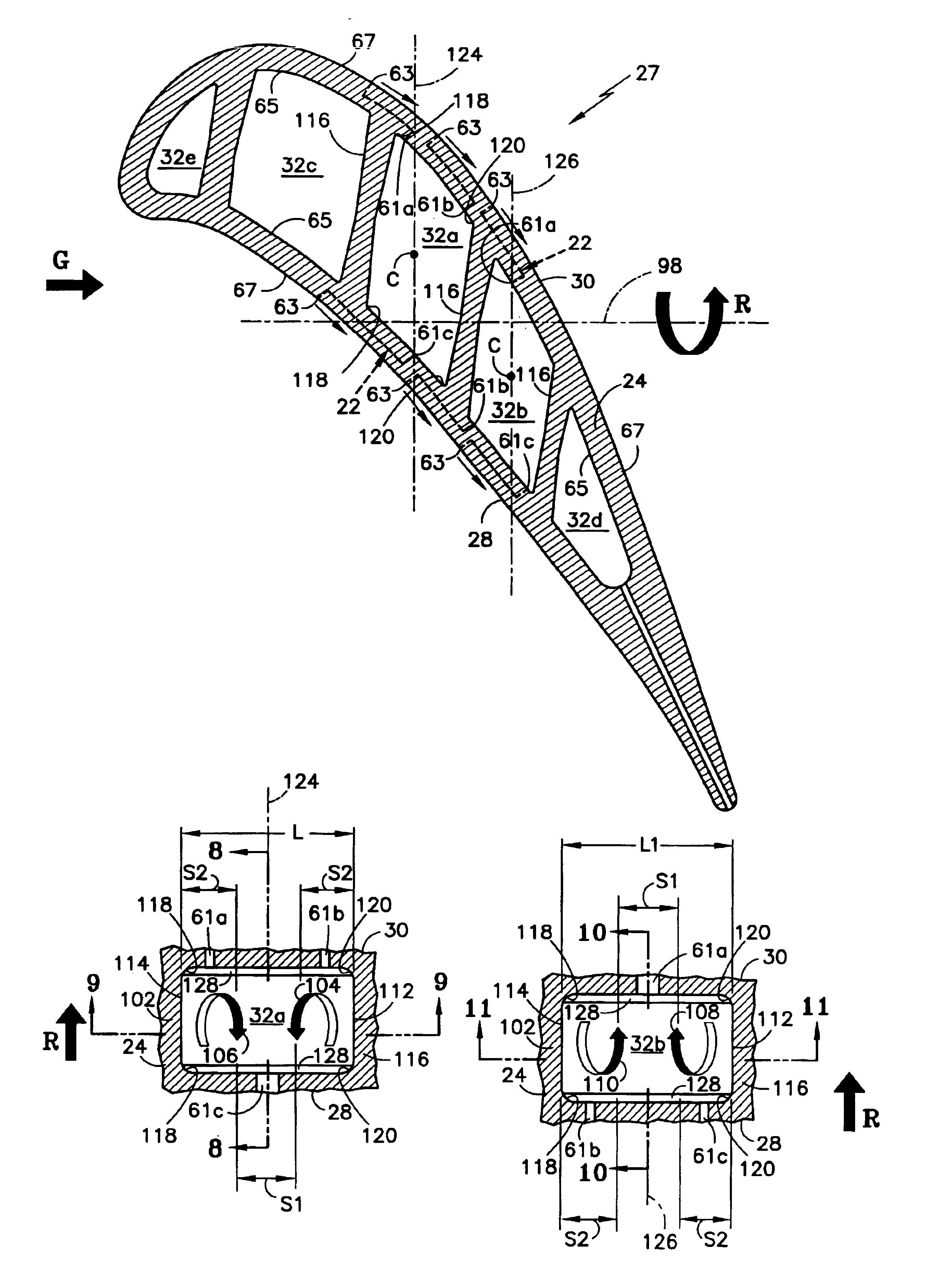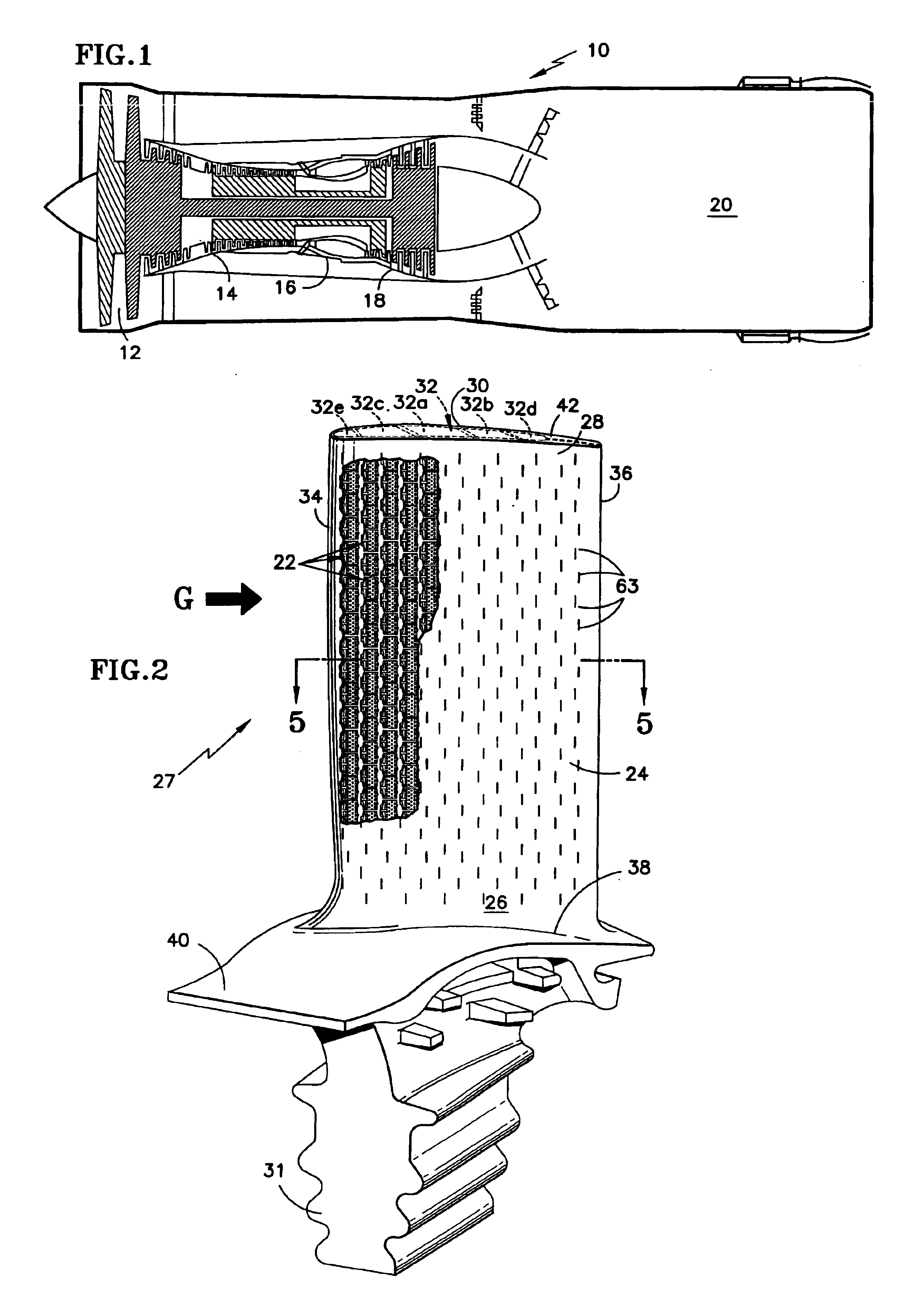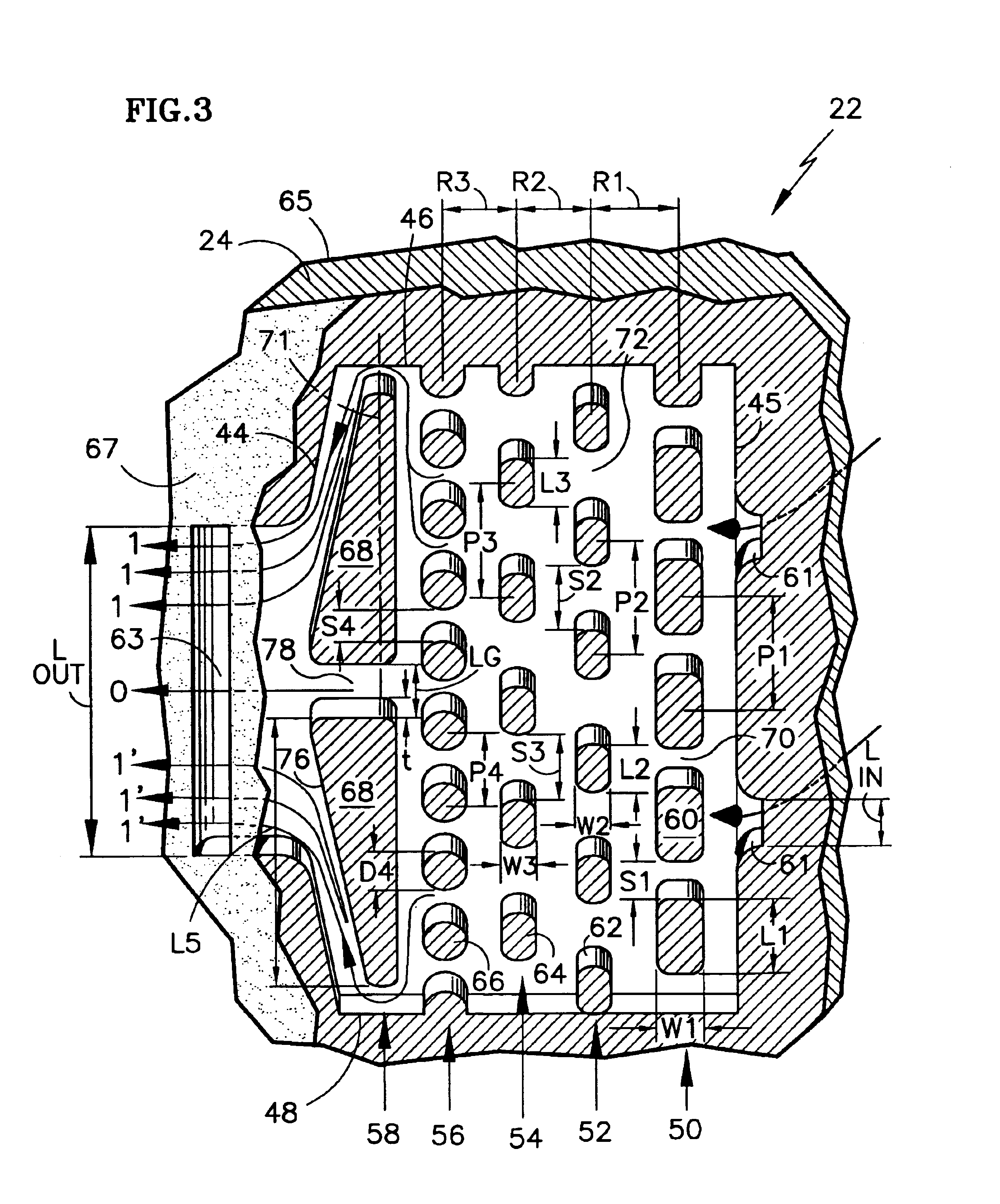Microcircuit cooling for a turbine blade
a technology of microcircuit cooling and turbine blades, which is applied in the direction of machines/engines, mechanical equipment, liquid fuel engines, etc., can solve the problems of affecting the overall efficiency of the engine, and a significant percentage of the work imparted to the compressor air bled, etc., to achieve the effect of increasing the efficiency of the turbin
- Summary
- Abstract
- Description
- Claims
- Application Information
AI Technical Summary
Benefits of technology
Problems solved by technology
Method used
Image
Examples
Embodiment Construction
[0024]Referring to FIG. 1, a gas turbine engine 10 includes a fan 12, a compressor 14, a combustor 16, a turbine 18 and a nozzle 20. In and aft of the combustor 16, most components exposed to core gas are cooled because of the extreme high temperature of the core gas. The initial rotor stages and stator vane stages within the turbine 18, for example, are cooled using cooling air bled off the compressor 14 at a pressure higher and temperature lower than the core gas passing through the turbine 18. The use of the system of FIG. 1 is for illustrative purposes only and is not a limitation of the instant invention which may be employed on gas turbines used for electrical power generation and aircraft.
[0025]Referring to FIG. 2, a diagrammatic view of a turbine blade 27 having an airfoil 26 that includes a plurality of the present invention microcircuits (cooling circuits) 22 disposed in a wall 24 of the airfoil 26 is shown. The blade 27 is cast with an internal cavity (cavity) 32 located ...
PUM
 Login to View More
Login to View More Abstract
Description
Claims
Application Information
 Login to View More
Login to View More - R&D
- Intellectual Property
- Life Sciences
- Materials
- Tech Scout
- Unparalleled Data Quality
- Higher Quality Content
- 60% Fewer Hallucinations
Browse by: Latest US Patents, China's latest patents, Technical Efficacy Thesaurus, Application Domain, Technology Topic, Popular Technical Reports.
© 2025 PatSnap. All rights reserved.Legal|Privacy policy|Modern Slavery Act Transparency Statement|Sitemap|About US| Contact US: help@patsnap.com



